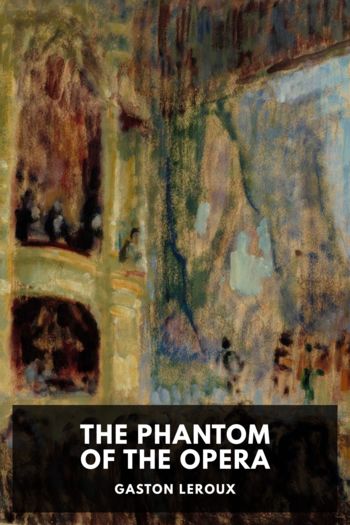The Banker Who Crushed His Diamonds Furquan Moharkan (books to read in your 20s .TXT) 📖

- Author: Furquan Moharkan
Book online «The Banker Who Crushed His Diamonds Furquan Moharkan (books to read in your 20s .TXT) 📖». Author Furquan Moharkan
However, according to the ED, the cost of this bungalow, as told to them by Rana Kapoor during the questioning, stood at Rs 405 crore. Other than this, Bliss Abode also has a bank balance of Rs 3.25 crore. This deal was one that became the last nail in Rana Kapoor’s coffin as CEO and MD of YES Bank.
Rahul Bhatia is believed to have paid the first installment towards acquiring the property. However, as he was waiting to pay the remaining sum and get the registration done in his name, the deal was cancelled. Bhatia red-flagged the issue to the government, who in turn alerted the RBI. When Rana Kapoor, who was at his peak at that time, got a call from RBI officials, he tried to throw his weight around. This, coupled with the fact that the RBI had been keeping a close eye on him, meant that the game was over for him at YES Bank!
Where was the money for Bliss Abode Pvt. Ltd coming from? The loan as of March 2020, according to the ED, was Rs 375 crore by Indiabulls Housing Finance Ltd. The interest paid to Indiabulls on this amount by Bliss Abode stood at Rs 39.50 crore. Other than that, there was also a capital infusion of Rs 72.75 crore by RAB Enterprises, an investment holding company, according to ED documents, with interests in real estate and mutual funds. RAB Enterprises, in turn, has investments in fifteen companies, and in all these companies Bindu Rana Kapoor and Ajita Madhukar Potdar are directors. RAB Enterprises has infused capital worth Rs 600.25 crore in these companies, along with holding mutual fund investments in the Aditya Birla Group worth Rs 12 crore. The company was founded in 2005–06.
The total outstanding of Indiabulls to RAB enterprises, as on 1 February 2020, stood at Rs 2540 crore. The total loans granted between 2013 and 2020 to Indiabulls stood at Rs 5661 crore — but a large portion of it was repaid by the time Rana Kapoor was arrested. This is not even a fraction of the complex web that Rana Kapoor was channeling his wealth through.
Figure 1:
*Ajita Madhukar Potdar is a family friend of the Kapoors
Source: Ministry of Corporate Affairs
The majority of assets Rana had created were given to his family. As one person who has closely tracked these investigations told me: ‘If you see, this showed his level of care for his family.’ Yes, Rana Kapoor was a complete family man. In fact, through one of these companies, DoIT Sports Management India Pvt. Ltd, where the directors are Radha and Roshini, the family also owns famous Pro Kabbadi League team Dabang Delhi. In many of these companies, there were directors who were not part of the immediate Kapoor family, but in many cases the address of the other companies that these non-Kapoor directors were part of was One, Indiabulls Centre in Lower Parel, Mumbai.
In fact, the ED had summoned Sameer Gehlaut of Indiabulls, along with other major defaulters of YES Bank. But by then the COVID-19 pandemic hit the country and the centre of investigation, Mumbai, was one of the worst-hit places in the country. Due to these constraints, the ED delayed the questioning of other related parties.
But there are, according to my own opinion, serious loopholes in the investigation. The ED alleges that Rana Kapoor misused the official position for financial gains by taking kickbacks. But what was the motive? The last time a banker was alleged of doing so was in the case of Chanda Kochhar of ICICI Bank — who was just an employee there. But Rana was the promoter of YES Bank. Why was he allegedly doing things that would end up damaging his own bank in lieu of the kickbacks? Were the promoters’ funds just a front? We will probably never know the answers to these questions, as the investigation is now centered around Rana Kapoor alone. In hindsight, Rana Kapoor would have never wanted his career to end in such a way, and he was doing all this because of his greed and no one had questioned him when he was able to show good profits.
DEFINING SECRECY
While YES Bank was going hammer and tongs at defying governance metrics, no one batted an eye. There was hardly any media scrutiny. The bank’s shareholders were living in a parallel world where YES Bank was an ideal example of what banking should be. The valuation of the bank was skyrocketing at a time when it was lending to the most stressed companies in the country. How was Rana able to pull off such a feat? Rana, right from the beginning, was overly conscious of the image he was creating for himself.
To broadly understand Rana Kapoor’s media manipulation, you have to divide the history of YES Bank into two phases: pre-Ashok Kapur and post-Ashok Kapur. In the pre-Ashok era, there were checks and balances on how Rana Kapoor used to operate. However, after Ashok’s death, this changed. Even during his novice days at Bank of America, he had hired a public relations team to carefully curate his image. Here was a banker, who was a small part of a big system, creating an image for himself, sitting behind his desk at yet another foreign bank in India. But the PR machinery started when he started, or rather connived to start, YES Bank.
Back in 2004, when Rana started YES Bank, he started an amazing marketing campaign to woo retail customers — why can’t you have an airline kind of experience? In all fairness, Rana was a corporate banking guy, and retail banking was direction given by Ashok Kapur. But then Rana knew that Indian customers were tired of the boring look of bank branches. He pitched it as the new-age retail bank with an amazing experience. As irony would have it, it was corporate banking that brought about the downfall of YES





Comments (0)